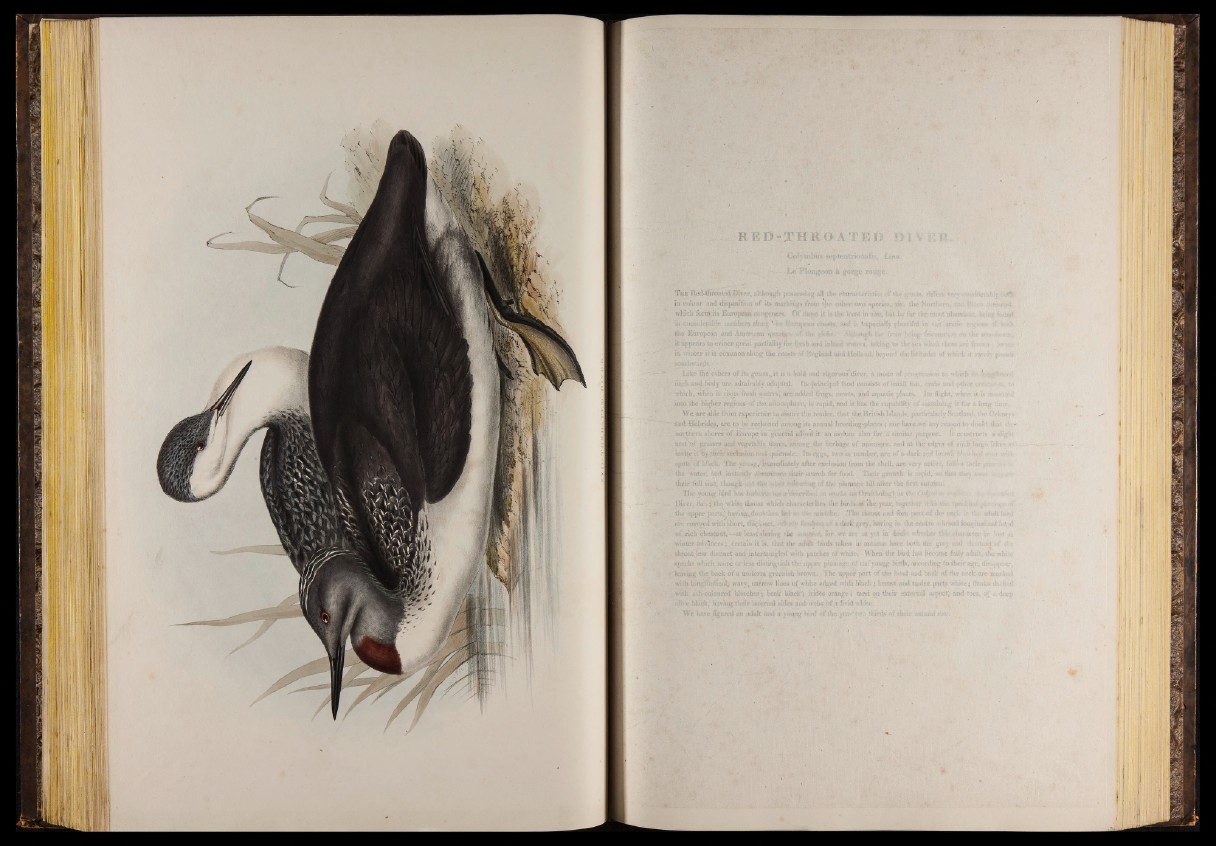
R E D - I H It OAT ED
VOlTfilUtlS S(i ¡militi')Oi '<)t ilS, .ÌAO-ìt.
' - -.X>è PlORgeoft: à rwrgoi
The Red^hroafod Diver, ¡¿'ifcbougb possessi t:g all ihe cha-nv. . ¡'. ■' 1 ,
in’colour and disposition of ite markings from the oilier two specie*, viz. !
which form,ite European cojigpiitshs. Of these it w the-least in size, but W ft the European and A m in em q,.-. % of1 the gfehe. ■ ■•-•,.-■•!. S front k
. it appearsto evinceg r t^ partìaHty ^ i^ h ì t ò d «’iiicis.. taking to 'the
iu winter it is common along the coasts ’>$ England nnii Hoil&od, beyond the
.Like the others o f its genus,, if is a hold and vigorous diver, a mode of ifr
Seek and body are admirably adopted, ite fujnrópal food consists o f smalt 1
which» when it visits fresh waters^ arò added frogs, newts, and aquatic plant
into thè higher regions of the attnosphere, is rapid» and it hW the capability
We are able from experience to assure the reader, that the British Islands,
• i » d are to be reckoned among its annual breeding-places ; nor hai
northern shores of Europe iu general aiforti.it an asyktn also for a > inti!ai
: npsfc'of grasses and -vegetable fibres, .among the Kerbbge o f morasses, and a
iavife it % tbeir sèdusioji iu»l quietude. Its eggs, two in number', are of a d
^Ote. bf b I^ * ^ h e yoh«g#|^»eniat^Jy after exclusion from the shell, are.\
the water, i*v:d instantly tfetupnence their search for food, wietr growth is
their fall sfiaBithoneh not dt# ■>.! ftofeoriuff of the plumage till after the. fil
rpper pu
wered y
ch cliest
le bird»;
a. dark,
taken i
ite edged wii
ijridSs orange